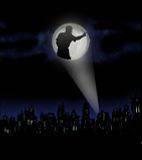default
Member
Here are two interesting cases from our Saturday games. What was the correct ruling?
First situation:
No.8 batter hits safely in the 3rd inning and a pinch runner enters the game. Batter No. 8 reenters the game and plays the field in the 4th and 5th innings, but does not officially report back into the lineup.
When No. 8 batter comes to the plate in the bottom of the 5th and takes first pitch, opposing coach challenges her as batting illegally.
What is the correct resolution of the at-bat?
Second situation:
One out - runner on first.
Batter swings and misses at third strike, then runs to first. (All of us bleacher bums concur that the pitch hit the dirt, and was scooped up by the catcher, so the ball did touch the ground.)
Catcher throws the ball to first, and it hits the batter-runner in the back and bounces into right field. Batter-runner reaches first. Runner who had occupied first had broken for second, and proceeds to third on the loose ball.
In discussing the resolution, the plate umpire indicates he believed the third strike was caught cleanly by the catcher.
Who goes where?
First situation:
No.8 batter hits safely in the 3rd inning and a pinch runner enters the game. Batter No. 8 reenters the game and plays the field in the 4th and 5th innings, but does not officially report back into the lineup.
When No. 8 batter comes to the plate in the bottom of the 5th and takes first pitch, opposing coach challenges her as batting illegally.
What is the correct resolution of the at-bat?
Second situation:
One out - runner on first.
Batter swings and misses at third strike, then runs to first. (All of us bleacher bums concur that the pitch hit the dirt, and was scooped up by the catcher, so the ball did touch the ground.)
Catcher throws the ball to first, and it hits the batter-runner in the back and bounces into right field. Batter-runner reaches first. Runner who had occupied first had broken for second, and proceeds to third on the loose ball.
In discussing the resolution, the plate umpire indicates he believed the third strike was caught cleanly by the catcher.
Who goes where?

